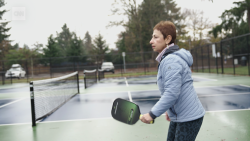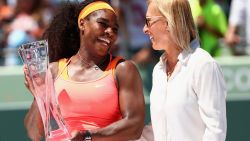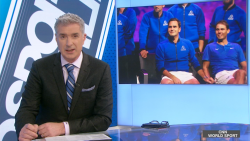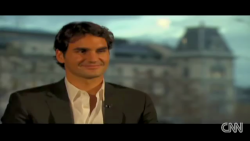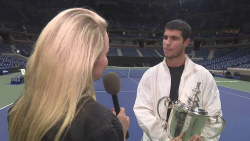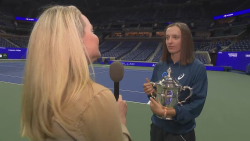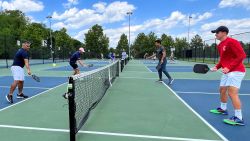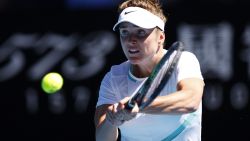As one of the brawniest, fittest tennis players to ever play the game, Rafael Nadal will, for some fans, forever be considered someone who wins simply by chasing balls and outlasting opponents.
That perception would be off the mark, with this Australian Open yet another example.
Nadal is a student of the game, always seeking improvements – be it strengthening his backhand, upgrading his net play or tweaking his court positioning.
READ: Kvitova, Osaka to battle for title
Those are but a few.
People laughed when, as a teenager, he said he wanted to win on the grass of Wimbledon. Now he has two titles there.
The notion that he’s a defensive player can stem from his unprecedented success at Roland Garros, where running for miles over five sets certainly helps in amassing victories. It is, though, only a part of the reason why he’s picked up 11 trophies there – the most of any player in history.
Visit cnn.com/sport for more news
“The problem with myself is, because I had a lot of success on clay, people probably think I am not aggressive,” Nadal, who reached his 25th grand slam final by crushing upstart Stefanos Tsitsipas Thursday, told reporters.
That is “completely wrong,” he says.
READ: ‘I can’t practice’: Nadal reveals how he lived tragedy of Mallorcan floods’
Every shot has a purpose
“Of course I am not doing serve and volley. I am not hitting winners every ball. But I play all the shots with a goal. There is not a better way to be aggressive than hit every shot with the goal to create damage on the opponent.
“That was my goal during all (my) career.”
During the current fortnight in Melbourne, it is Nadal’s serve gaining plenty of attention. He tweaked his motion in the off-season, lessening his knee bend and first conjoining ball and racket below his waist rather than above it. Nadal’s coach Carlos Moya has been a key influence in rebooting the Mallorcan’s serve.
“It is smoother, less hitchy with the legs and with the motion in general,” Jill Craybas, a former world No. 39 who is now a television and radio analyst, told CNN. “The body mechanically flows better.
“The body overall works better as a whole unit.”
The result has been Nadal being broken only twice – and that came in the first round against the free-swinging James Duckworth. He has saved all 13 break points since, including against two more Australians, Matt Ebden and Alex de Minaur.

“It’s mind blowing,” said Hall of Famer Mark Woodforde, also now a television analyst. “A little soft draw I think, trying not to take away anything from the three Australians, but they’re just not at that same level.
“It’s almost like they’ve played him into form.”
Serve speeds
Nadal’s actual velocity isn’t dramatically different to his last tournament, the US Open.
The Spaniard’s average first serve speed against Tsitsipas on Thursday clocked in at 113 miles per hour, mildly faster than his 111 miles per hour against Dominic Thiem in the US Open quarterfinals in September, his last completed match before the Australian Open.
His fastest serve here this year came in the first round against Duckworth, registering at 126.8 miles per hour.
The figure is still considerably off from Nadal’s serve at the US Open in 2010, when he rode serves of 135 miles per hour to the title and beat Novak Djokovic in the final.
He is averaging a shade above six aces per match – about the same as nine years ago.
“His serve, he’s not the biggest server on tour, has a pretty average serve,” said the 20-year-old Tsitsipas, who also fell to Nadal twice in straight sets last year. “But it’s annoying that I didn’t get close to break him at all. He’s just very aggressive from the baseline. That’s pretty much it.”
That works with both his heavily spun lefty forehand and his flatter backhand.

Nadal has conceded 48 games in six matches, his lowest tally ever on the way to a grand slam final outside the French Open.
And this after an abdominal injury and ankle surgery truncated his off-season. The oft-injured 32-year-old then skipped Brisbane this month due to a thigh strain.
“He’s playing so offensively, points are so short, but we’re talking about this guy who is the greatest defender, absorber of pace, one who is willing to stay out there for hours, 10 feet behind the baseline if necessary,” said Woodforde.
“But he’s not having to play like that at the tournament so far. But he can play like that. That for me is kind of his safety net.”
Still the competitor
While the serve may be new, his competitive instincts remain the same.
“I knew he was going to bring crazy intensity,” Frances Tiafoe, like Tsitsipas a Next Gen star gobbled up by Nadal, told reporters after their quarterfinal. “I knew the ball was going to be jumping. I knew if he got hold of a forehand, it was going to be barbecued chicken.
“But point in, point out, I’ve never seen someone so locked in.”
But Nadal’s biggest test comes in the final when he faces world No. 1 Djokovic, who routed France’s Lucas Pouille in the other semifinal.
If Nadal loses 10 years after his lone title at the Australian Open, it certainly however won’t be for a lack of trying – or tinkering.



